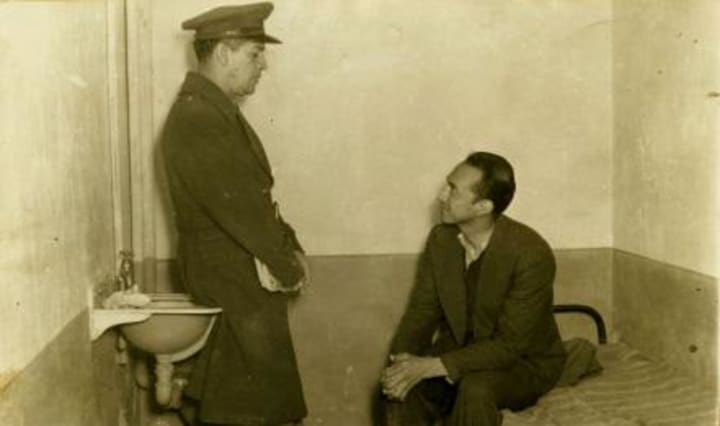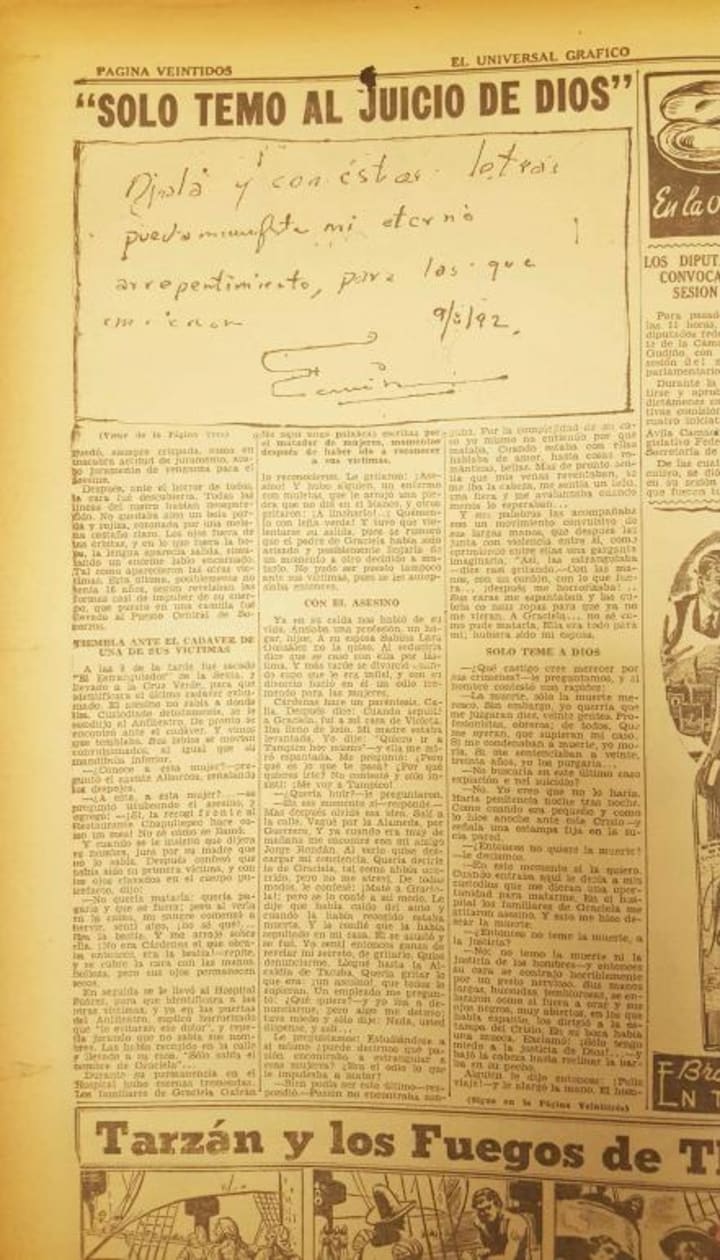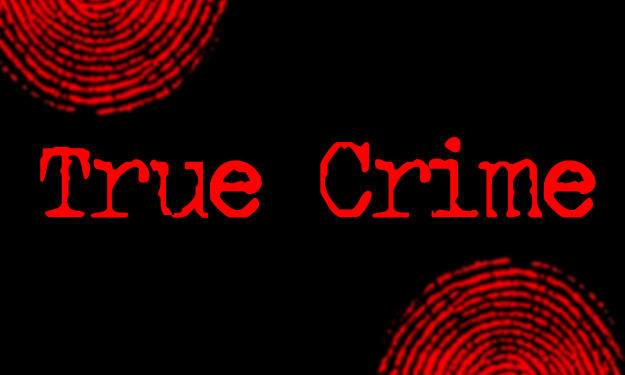"GOYO" CARDENAS, THE TACUBA STRANGLER
Gregorio Cardenas killed four women. Upon his release from prison, after 34 years, he received a standing ovation in the Chamber of Deputies.

Gregorio Cárdenas Hernández
The ovation in the Chamber of Deputies lasted several minutes and the honoree thanked with his hands in the air. Gone were the 34 years he was held captive in the asylum of La Castañeda and in the Black Palace of Lecumberri, for murdering and burying four women in the garden of his house.
The legislators justified their "homage", arguing that the case of Gregorio Cárdenas Hernández, better known as Goyito Cárdenas, "The Tacuba Strangler", was the best example that a delinquent can be rehabilitated and readapted to society, after paying for his faults and becoming a useful man.
Goyito", the neighbors of Mar del Norte Street considered him an excellent son, an exemplary student of the School of Chemical Sciences of the UNAM, who rejected the scholarship offered by Petróleos Mexicanos to study in the United States, "out of love for his mother, so as not to abandon her".
Goyo had his own car, rented an apartment that he used to study, was an employee and union leader in PEMEX, almost a perfect life that he would truncate in less than 20 days, when he gave vent to his traumas, depressions and complexes, murdering four women, three of them from the gallant life.
Gregorio's appearance was really inoffensive, of thin complexion, medium height, with ringlets, shy, shy, shy, there was nothing in him that foreshadowed the existence of a potential serial criminal.
On the night of August 15, 1942, "Goyito" went out in his Ford automobile and picked up a sixteen year old girl named María de los Angeles González, alias "Bertha", on the street, whom he took to her home, at number 20 Mar del Norte Street, in Tacuba.
At the stroke of midnight and after having sex, the young woman went to wash herself in the bathroom, moments that Goyo took advantage of to strangle her with a cord. When he was sure she was dead, he took her body to the patio, dug an improvised grave and buried her there.
A week later, on the night of August 23, "Goyito" went out "hunting" again; this time the chosen one was only fourteen years old. History repeated itself. He convinced her to accompany him to his house where the teenager was surprised that his client had an extensive library.
They had sex and when she was distractedly looking at some of the books, Goyo took the same cord with which he had victimized the first woman and strangled her. At five in the morning of the following day, the woman was occupying another place in the patio of the Mar del Norte house.
Initially she was identified as Raquel González León, but a girl with the same name appeared alive months later, so it was ruled out that it was Raquel, but the murdered girl was never recognized.
Trapped in a dizzying race of blood and death, Goyo shortened the time and waited only six days before going, on the night of August 29, to look for a new female companion.
He found her in another sex worker, Rosa Reyes Quiroz, also a minor, however Goyo had neglected his surroundings: his laboratory was in disarray, the books were out of place, dirty clothes were everywhere and dust was beginning to accumulate everywhere, which provoked mistrust in Rosa, who avoided going to bed with her client.
The young woman pretended to be interested in seeing the laboratory and while she was looking at some flasks, test tubes and a microscope, without having had relations, Goyo attacked her and strangled her.
Rosa ended up like the other two women, in a clandestine grave in "Goyito's" garden.
Only four days later, on September 2, Goyo consummated his fourth and last crime, but with some variations, although with the same final destination: the garden of the house in Mar del Norte where he would bury the young woman.
Goyo was courting a girl named Graciela Arias Ávalos, a high school student of Chemical Sciences at UNAM, a model student, daughter of a very well known criminal lawyer: Miguel Arias Córdoba.
The young woman accepted Goyo's friendship, but she did not see him as a romantic partner, but simply as a friend; that day, Graciela waited for Goyo outside the National Preparatory School. He had offered her a ride to his house, located in the Tacuba neighborhood.
When they arrived outside her house and still inside the car, Goyo spoke to her about his love for her, but Graciela rejected him and then he tried to kiss her by force.
She reacted by slapping him and Goyo, out of his mind, yanked off the handle of the car and with it began to hit Graciela in the head until he killed her.
He then drove the car to his own house. He lowered the corpse, wrapped it in a sheet, put it next to the cot where he slept and went to sleep. In the early morning of September 3, he buried it, just like the others.
Five days later, on September 7, Goyo asked his mother, Vicenta Hernández, to take him to the Psychiatric Hospital "Oneto Barenque", located on Primavera Street, in Tacubaya, he told her that he felt bad, they examined him and decided to admit him.
It was there, in said hospital, where he was arrested.
As to how the Secret Service solved the case, two versions were put forward: one, that some of the nosy neighbors saw from their rooftop that among the disturbed earth of that meadow the shoes of a woman could be seen on the ground, so they alerted the police.
The other, more credible, said that the lawyer Arias Cordoba, Graciela's father, hired the services of a private investigator to locate his daughter and the interrogations of her classmates revealed that Goyo had been the last person Graciela had been with.
The then deputy chief of the Secret Service, Simón Estrada Iglesias, second in command to Rafael Rocha Cordero, "El Gallo" or "Rochita", as he was called by his friends, went to the psychiatric hospital to interrogate Goyo about Graciela's disappearance.
When questioned, Goyo answered incoherently while showing him some pieces of chalk, assuring him that they were pills with which "he would become invisible and they would not be able to do anything to him".
The interrogation intensified and finally Goyo finally collapsed; he confessed that he had killed the girl and that he had buried her in the backyard of his house.
The afternoon of that same day, the police, accompanied by Goyo, entered the house in Mar del Norte and immediately noticed a rotten foot sticking out of the ground and began to dig.
They were surprised to find not only the body of the student, but also those of three other women who had been strangled and buried in the same way.
Upon arriving at the police station, the murderer showed off his developed capacity as a typist and in a matter of minutes wrote his own statement in which he accepted the murders against the four women, despite this and as the years went by, Goyo denied all responsibility in the quadruple murder claiming not to remember anything.
Subsequently, investigators found in his study room, a diary written in Goyo's handwriting that read:
"On September 2, Gracielita's death was consummated. I am to blame for it, I killed her, I have had to take the responsibility that corresponds to me, as well as those of other people unknown to me, I hid the corpses because in each case I had the conscience of having committed a crime".
On September 13 he was sentenced to formal imprisonment and was initially held in the Black Palace of Lecumberri, in the ward for the mentally ill, however, his lawyers managed to have him transferred to the General Insane Asylum of La Castañeda to undergo treatment.
There he was given electroshocks and injected with sodium pentothal to determine if he was really insane or just pretending, and there was even talk that he was given a lobotomy.
Shortly after, when it was determined that he was not insane, he was returned to the Lecumberri penitentiary, where he remained four years longer than he had to serve for his crimes, since the maximum sentence at that time was 30 years.
Acknowledged the bodies and expressed regret

In an interview published on September 9, 1942, and in response to questions asked by reporter Julio Barrios, Goyo confessed to wishing for death at that time.
The interview took place the day he was taken to recognize the bodies of his victims, he always showed horror for what he had done and said he remembered them. In the conversation he himself pointed out that his hatred towards women and his murderous instinct originated after he divorced his first wife Gabina Lara González, who had been unfaithful to him.
Psychiatric studies indicated that since he was a child he used to torture chickens and rabbits, and that his relationship with his mother was unhealthy; she always tried to dominate him.
In the conversation with reporter Julio Barrios, Goyo described that when he was in front of women, his blood would suddenly "boil" and he would become like a beast, even describing how he would strangle them with his hands. He also stated in anguish that he was deeply remorseful for everything he had done. He even wrote a few lines showing his repentance. People already called him the "Strangler of Tacuba".
-What punishment do you think you deserve for your crimes? -asked the reporter.
-Death, only death I deserve. However, I would like to be judged, 10, 20 people. Professionals, workers, everyone. That they hear me, that they know my case. If they condemned me to death, I would die. If they sentenced me to 20, 30 years, I would serve them," he answered immediately.
-So you are not afraid of death, of justice?
-No. I fear neither death nor the justice of men," he frowned and exclaimed, "I fear only the justice of God!

Murderer studied and applauded in the Chamber of Deputies
During his stay in prison, Gregorio Cárdenas showed impeccable conduct, he dedicated himself to reading poetry, painting and even exhibited his work in a gallery in Mexico City. He memorized the Penal Code and began his career as a lawyer in prison, resolving many of the cases of his fellow prisoners who were eventually released.
He wrote several books, among them Cell 16; a radio soap opera was made about his life, with very high ratings. Filmmaker Alejandro Jodorowsky used Goyo's biography as the basis for one of his most surrealist films, Santa Sangre.
Goyo's pathology became a mystery, sometimes he would shut himself up in obstinate mutism, often claiming to have forgotten details as important as his parents' visit to the penitentiary, but instead he remembered having murdered Gracielita, the girl who was studying chemistry and whom he wanted.
Years later, the lawyer Salvador Salmerón was the only one who decided to prosecute this murderer. He even managed to have him transferred from Lecumberri to the Oriente prison, where he spent his last days of confinement.
On September 8, 1976, after a great effort and tireless requests from his family, asking for the prisoner's absolution to the then president of the Republic, Luis Echeverría, who gave him a presidential pardon. Unexpectedly, after 34 years of incarceration, the prisoner, who by that time was already considered a "celebrity", not only in the penitentiary, but in all of Mexico City, was granted his freedom. Finally, the serial killer walked the streets again.
Upon his release from prison, Goyo was invited by the Secretary of the Interior, Mario Moya Palencia, to the Chamber of Deputies. The intention was to show him as a clear example to follow for having managed to integrate into society and for having successfully applied the correctional system. That day the 60-year-old man, a serial killer, was given a standing ovation by the deputies.
Finally, Gregorio Cardenas Hernandez died on August 2, 1999 and thus became the most surrealistic serial killer in history. The people made songs for him, there were holy cards with his image and he was even idolized by the people.
About the Creator
diego michel
I am a writer and I love writing






Comments
There are no comments for this story
Be the first to respond and start the conversation.